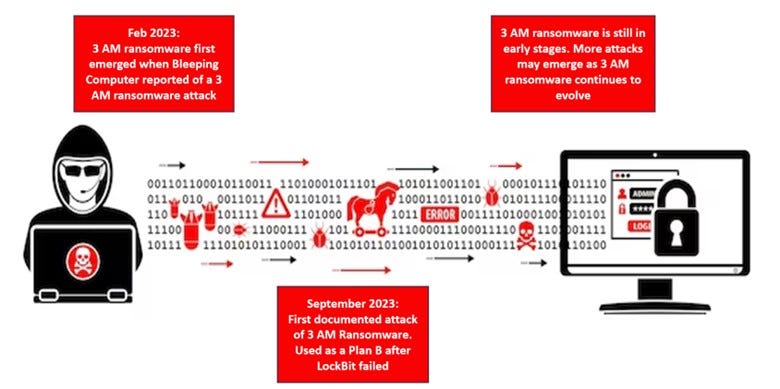Combatting the 3 AM Ransomware Menace
Fostering a culture of cybersecurity awareness is fundamental for maintaining the integrity and availability of critical services.
Join the DZone community and get the full member experience.
Join For FreeEvaluating Vulnerabilities in Essential Services (Like E-Commerce, Health Care, Public Safety, Etc.) to Cyber Attacks
A recent analysis by Emsisoft reveals a significant uptick in ransomware attacks across various sectors, including essential services. In 2023, the United States witnessed an alarming rise in such cyber threats, severely impacting the functionality and safety of critical infrastructure. While hospitals were notably affected, the broader implications touch upon the urgent need for fortified cybersecurity measures across all vital sectors.
Malwarebytes labs also reported that the "US shouldered a hefty 43 percent of all global attacks and that ransomware attacks in France nearly doubled in the last five months."

What Really Was the 3 AM Ransomware Attack?
It was in February of 2023 in a daring cyber saga, a new ransomware strain known as 3 AM emerged, making waves in the digital underworld. The 3 AM ransomware made its mark when a group of hackers deployed it in a high-stakes maneuver to salvage a failed LockBit ransomware attack. This audacious move showcased the adaptability of cybercriminals, who seamlessly switched between different ransomware strains to achieve their nefarious goals. The ransom note, shrouded in mystery, alluded to the time of 3 am, leaving victims in a state of bewilderment as their files were mysteriously encrypted, with no signs of hope in sight
Although the nefarious attack was largely unsuccessful, the 3 AM ransomware attack underscored the potentially life-threatening consequences of such attacks, with incidents reported where patients received incorrect medication doses due to hospital computer systems being down. The 3 AM attack had a severe and long-lasting impact on the healthcare industry, compromising patient care, privacy, and safety. It disrupted medical services, compromised patient data, and led to an increase in in-hospital mortality, emphasizing the urgent need for proactive measures to prevent such attacks and protect human lives.

This incident underscores the multifaceted impact of ransomware attacks, beyond just financial losses. For critical sectors, the ripple effects can be devastating—leading to operational disruptions, compromised safety, and in some contexts, endangering lives.
The Ongoing Battle Against Cyber Threats
The emergence of ransomware like 3 AM demands relentless vigilance and proactive defense strategies. It's a call to action for sectors beyond e-commerce, health care, or public safety and emphasizes the importance of safeguarding operational integrity and public safety against the evolving cyber threat landscape.
As we navigate the complexities of cybersecurity in an increasingly digital world, the 3 AM ransomware episode highlights the critical need for robust cybersecurity frameworks. Protecting the digital frontiers of critical infrastructure is paramount, as the consequences of failure extend far beyond the digital realm, affecting real-world safety and well-being.
Stay Informed and Prepared
The battle against cyber threats is ongoing, with each attack providing insights into the necessity for enhanced security measures. The 3 AM ransomware attack, while a cautionary tale, also offers a blueprint for resilience and response in the face of digital adversity.
For those invested in the security and safety of critical infrastructure, the lessons learned from these cyber assaults are invaluable. It’s crucial to remain informed and proactive, ensuring that essential services remain unbreachable bastions in the cyber domain.
How To Safeguard Software Infrastructure From Ransomware Attacks
It's crucial to adopt a multi-layered approach to prevent ransomware attacks. This includes:
- Regular software updates to patch vulnerabilities
- Advanced threat detection tools for early identification of risks
- Comprehensive employee training on recognizing phishing attempts
- Implementing strong access controls, employing encryption for sensitive data, and ensuring timely backups can safeguard against data loss.
Fostering a culture of cybersecurity awareness is fundamental, it empowers organizations to proactively defend against the ever-evolving landscape of cyber threats, maintaining the integrity and availability of critical services.
Opinions expressed by DZone contributors are their own.

Comments